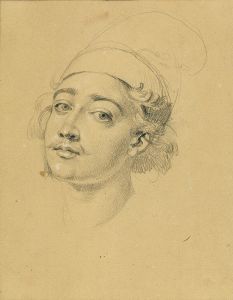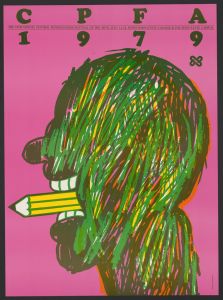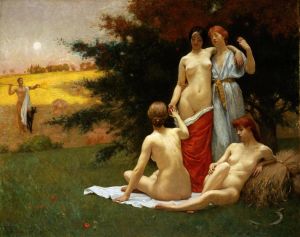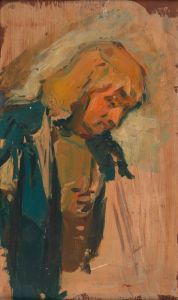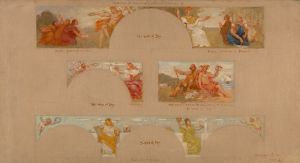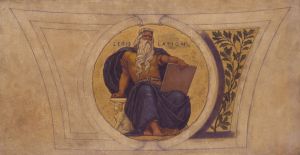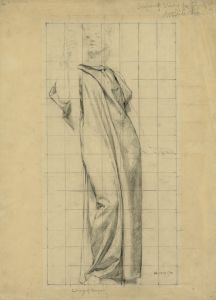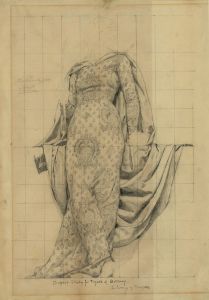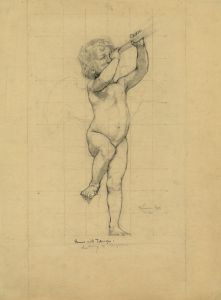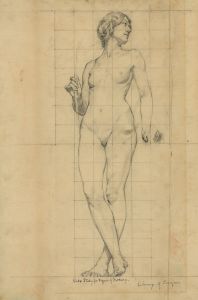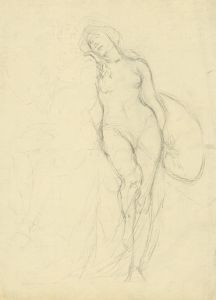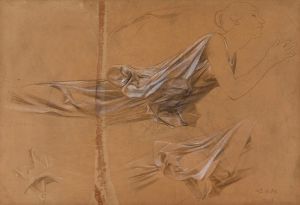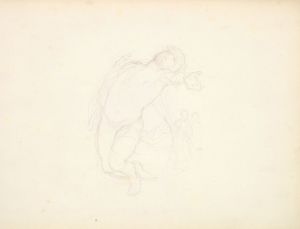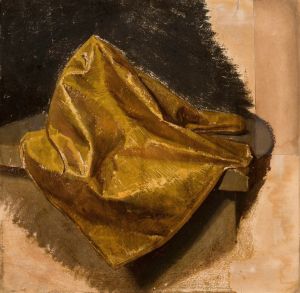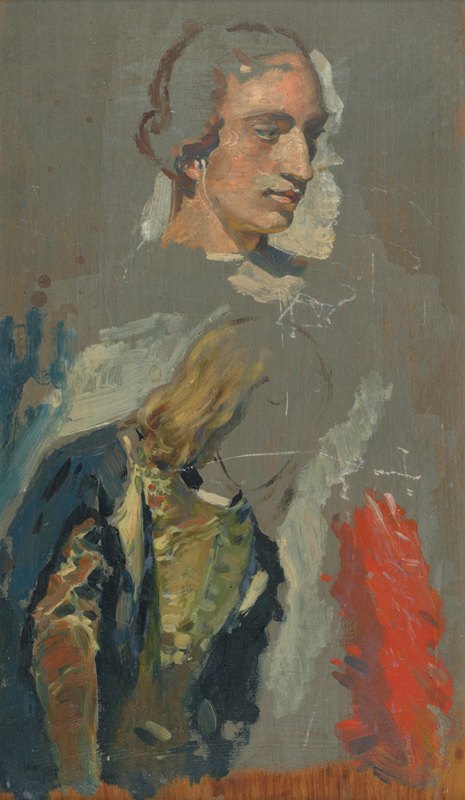
Study of man
A hand-painted replica of Kenyon Cox’s masterpiece Study of man, meticulously crafted by professional artists to capture the true essence of the original. Each piece is created with museum-quality canvas and rare mineral pigments, carefully painted by experienced artists with delicate brushstrokes and rich, layered colors to perfectly recreate the texture of the original artwork. Unlike machine-printed reproductions, this hand-painted version brings the painting to life, infused with the artist’s emotions and skill in every stroke. Whether for personal collection or home decoration, it instantly elevates the artistic atmosphere of any space.
Kenyon Cox was an American painter, illustrator, muralist, and writer, active in the late 19th and early 20th centuries. He was known for his academic style and his contributions to the American Renaissance movement, which sought to bring classical art and architecture to the forefront of American culture. One of his notable works is "Study of Man," which exemplifies his dedication to classical techniques and themes.
"Study of Man" is a drawing that reflects Cox's commitment to the academic tradition of art, emphasizing the study of the human form. This work is a testament to his rigorous training and his belief in the importance of understanding anatomy and proportion in art. Cox was educated at the Pennsylvania Academy of the Fine Arts and later at the École des Beaux-Arts in Paris, where he was influenced by the classical techniques taught there. His education under the tutelage of renowned artists like Jean-Léon Gérôme instilled in him a deep appreciation for the precision and discipline of classical art.
The drawing itself is a study of the male nude, a common subject in academic art, used to explore the complexities of human anatomy and the play of light and shadow on the body. Cox's "Study of Man" showcases his skill in rendering the human figure with accuracy and sensitivity. The work likely served as both a teaching tool and a demonstration of Cox's mastery of form, reflecting the academic practice of creating studies as a foundation for larger, more complex works.
Cox's approach to art was heavily influenced by his belief in the moral and educational value of classical art. He was a vocal advocate for the role of art in society, writing extensively on the subject and teaching at the Art Students League of New York. His writings often emphasized the importance of beauty, order, and harmony, principles that are evident in his artistic practice.
"Study of Man" fits within the broader context of Cox's oeuvre, which includes murals, paintings, and illustrations that often draw on historical and allegorical themes. His work is characterized by a clarity of form and a dedication to the ideals of the Renaissance, which he sought to adapt to the American context. Cox's contributions to art were not limited to his own creations; he also played a significant role in shaping the next generation of American artists through his teaching and writing.
In summary, Kenyon Cox's "Study of Man" is a reflection of his dedication to the academic tradition and his belief in the enduring value of classical art. Through his meticulous study of the human form, Cox not only demonstrated his technical skill but also contributed to the broader cultural movement that sought to elevate American art through the principles of beauty and order.





